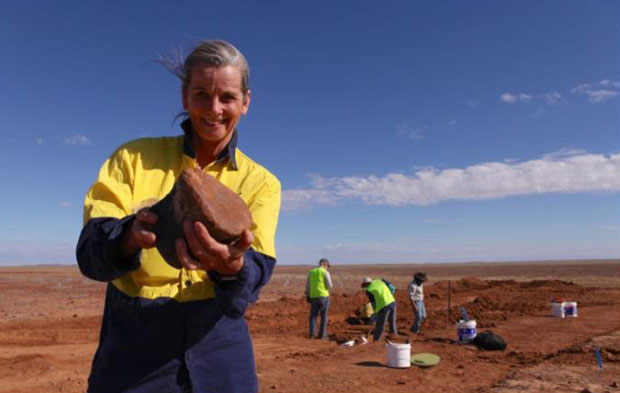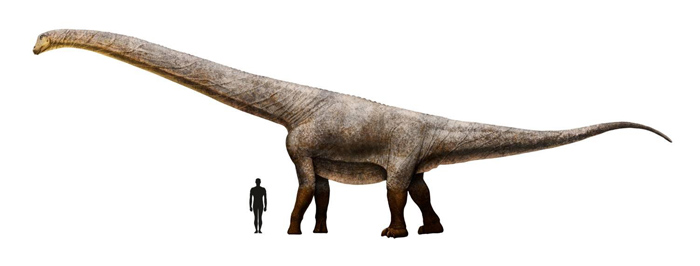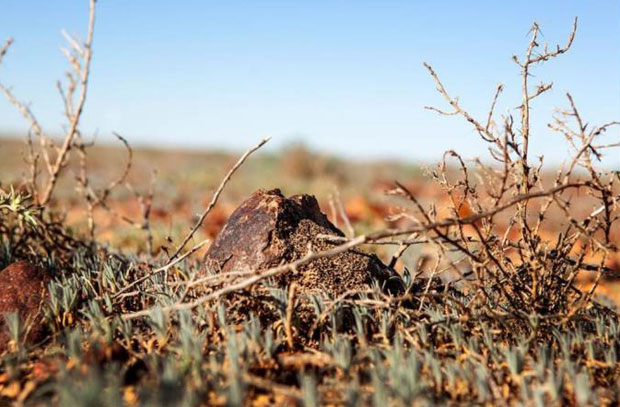Team members at Everything Dinosaur have received reports from Australian media sources that dinosaur bones have been discovered at Eromanga in western Queensland. The fossil bones believed to be cervical vertebrae (neck bones) represent the remains of a titanosaur. A field team from the Eromanga Natural History Museum has begun excavations and they suspect that the fossils, representing a titanosaur will end up being described as a new species.

Land of Giant Titanosaurs
Several dinosaurs have already been named and described from fossil remains found in this region. The sandstones, mudstones and silts represent deposits from an ancient river network. Given the depth of the formation (the Winton Formation), that exceeds 400 metres deep at some locations, palaeontologists have postulated that this part of Australia around 98-95 million years ago was home to a huge river comparable to the Mississippi today.
Palaeontologist and director of the Eromanga Natural History Museum, Robyn Mackenzie explained that the excavations were looking promising and that she was optimistic that more elements from the skeleton of the large herbivore would be found.
In 2015, Everything Dinosaur reported on the fossilised bones of Australia’s largest dinosaur going on public display for the first time. These fossils were found in the same region and represent an animal around thirty metres in length. The dinosaur was nicknamed “Cooper”.
To read more about the titanosaur nicknamed “Cooper”: A super-duper titanosaur called “Cooper”.

Fossils Found by Director’s Son
The site was first discovered in 2018 by Robyn Mackenzie’s son and daughter-in-law. Whilst out rounding up cattle dinosaur vertebrae were spotted exposed on the surface of the red clay soil.

A spokesperson from Everything Dinosaur stated that dinosaur bones from the early Late Cretaceous were relatively rare globally and the fossils from this part of western Australia are helping palaeontologists to better understand the dinosaur biota of southern Gondwana.
The Everything Dinosaur website: Dinosaur Models and Toys.






Leave A Comment